Visiting a village in Namibia
For my final excursion while in Africa, I headed northwards to visit a new country, Namibia, and to visit my friend George. George and I met two years ago when he came to work in the States for a year at the Animal Kingdom Lodge in Disney World, Florida. I showed him around Washington, DC for a few days, and he told me that if I was ever in Namibia, I was welcome to come and visit his village. I bet he never thought I would actually show up!

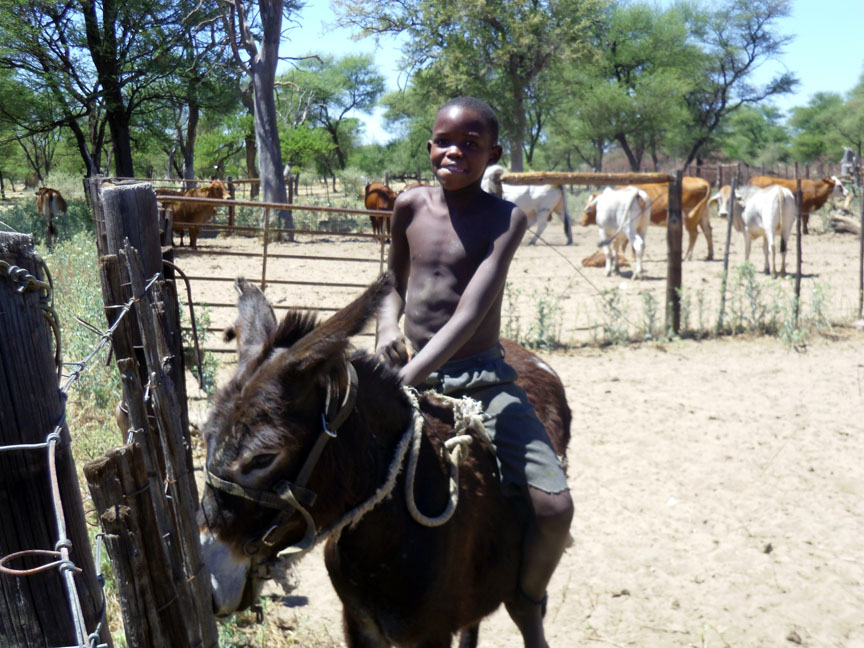
George picked me up in Windhoek, and we drove for about four hours north and east to his village, called Orunahi, near the town of Okakarara. George works during the week at a school near Windhoek in the former township of Katatura. We later took a tour of the area, which was largely a sea of currogated-tin shanties and makeshift bars called shebeens. I can see why George eagerly leaves each Friday afternoon to spend the weekend with his family out in the country, where life is far more quiet. George is Herero, and everyone in his village and the surrounding area speak Ochiherero. A few people we met spoke English, but for the most part I was dependent on George or his wife Tina as translators.
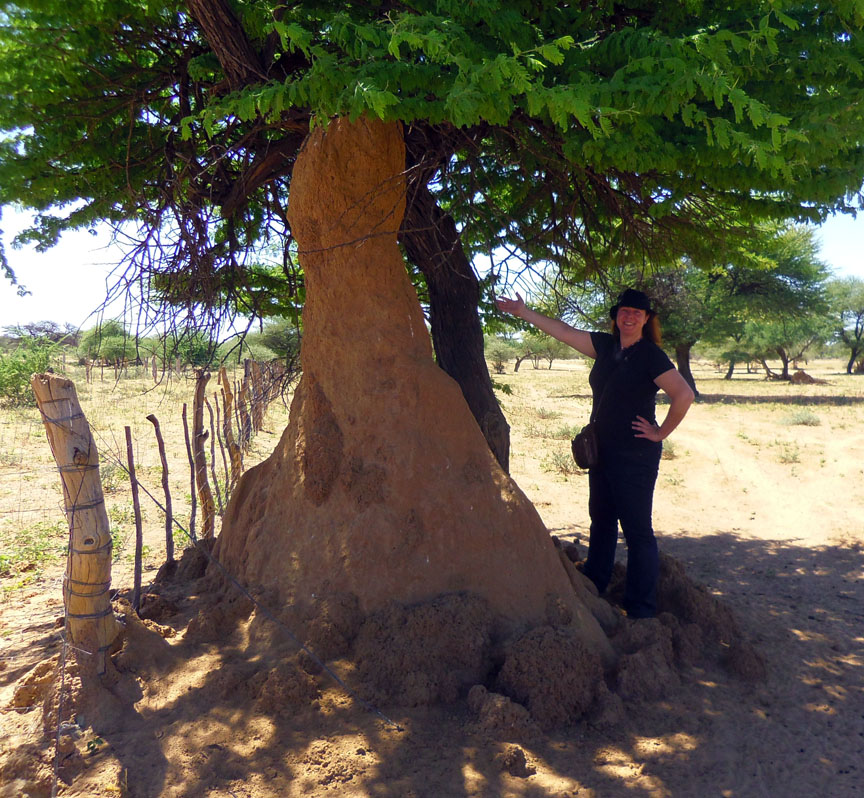

Everyone in the village was tremendously welcoming. Only about 100 people live in Orunahi, and most people make their living raising goats or cattle. George had a herd of both goats and cattle, which roamed freely through the surrounding nature during the day and would come home on their own at nice. I hadn't realized how dry and desert-like the climate in Namibia would be, so it's quite impressive that cattle herding can even succeed here. Namibia has no rivers that run year-round; they are ephemeral rivers that only run in the rainy season. The rest of the year, the villagers all pitch in to buy diesel for an underground water pump that supplies a communal waterhole for livestock. There was a small faucet near George's house that pumps in drinking water from a neighboring town. George told me that the water supply was only extended about 10 years ago, and until then the villagers had to travel several miles by donkey cart to fill large canisters with water and bring it back. I can't imagine living in such a harsh environment where water is such a scarce luxury.
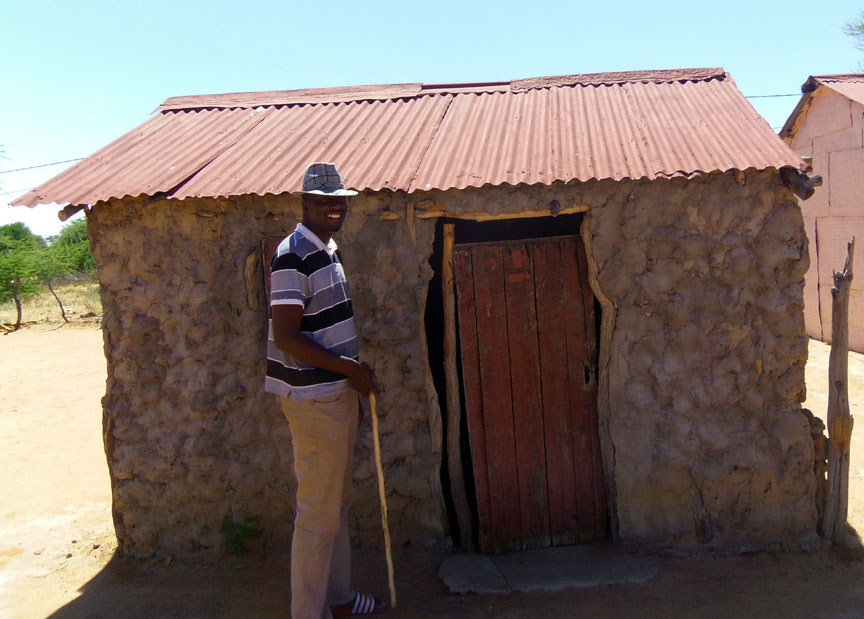
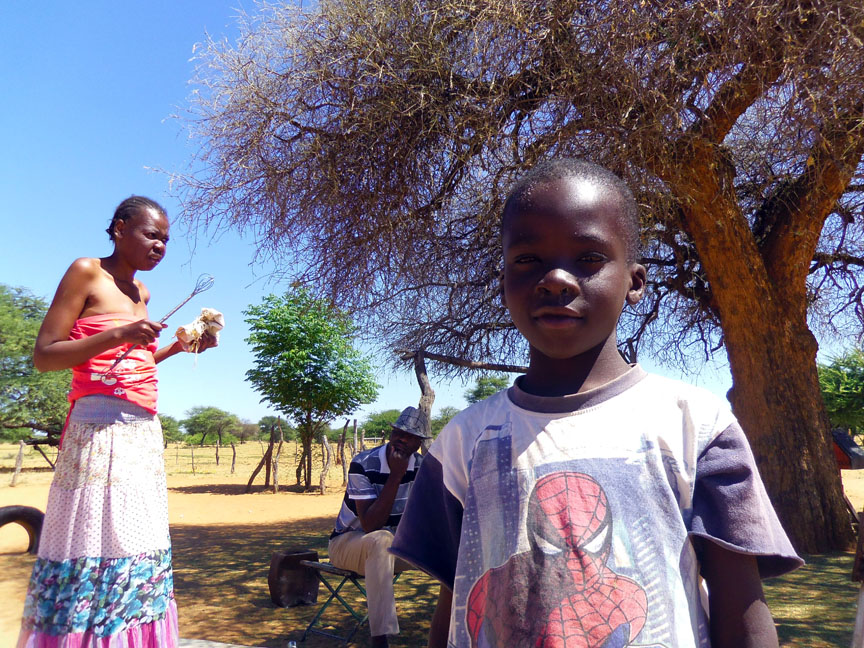
George gave me a tour of the village, where many of his neighbors are also members of his extended family. George's home was quite simple: just two rooms in small structure made of concrete bricks. But he did have a nice truck and electricity in his home. Because George has a weekday job in the city, his family has much more income than most of the people I met. Many of the neighbors just lived in small one room buildings made of scrap metal or cow dung mixed with clay. One neighbor showed me how he made homemade beer in buckets in his yard, which he sold to other neighbors who would come buy and drink it, sitting in a circle on stools outside. He was trying to save money to buy materials for a new house, and was busily hammering out old nails so that they could be re-used.
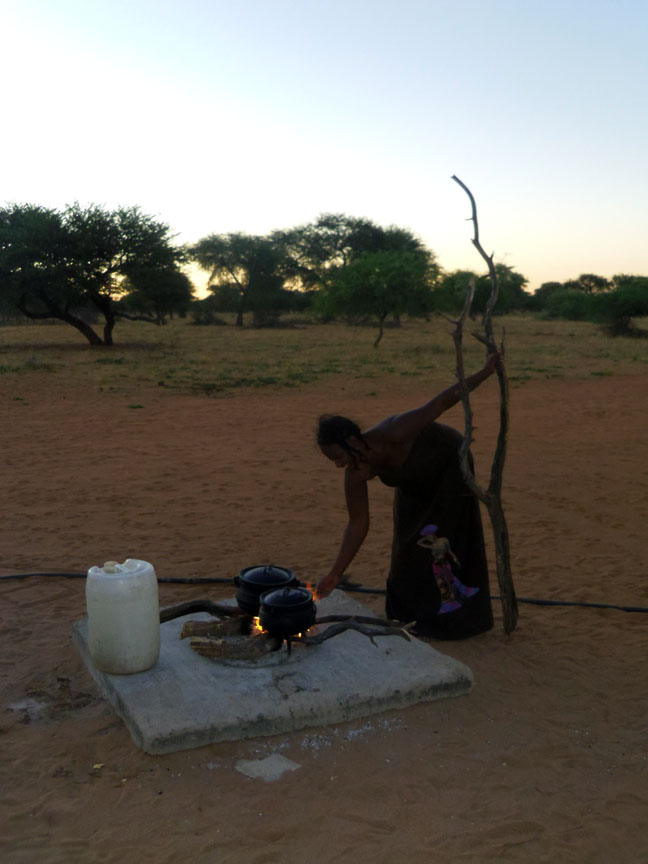
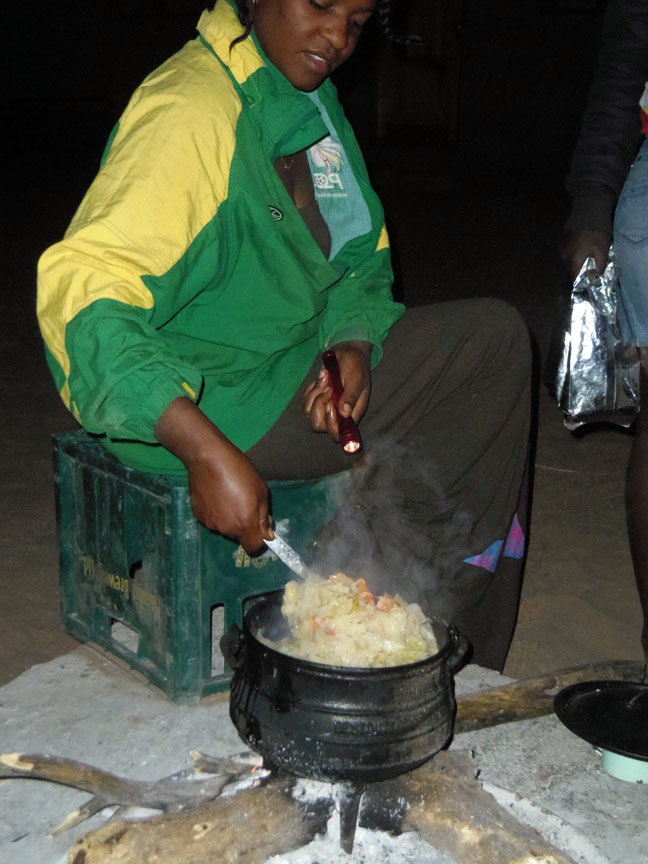
George and Tina have an adorable 1-year old daughter named Pupenua, and while Tina prepared meals I had a chance to play with her a bit, though it took her a while to warm up to me (Tina said I was the first white person she'd ever seen, and this might have scared her). Tina cooked us some wonderful meals, all made outside on a fire made of pungent and sweet-smelling dried acacia braches. The second night I was there, I got to watch Tina prepare our meal of cabbage and carrot stew and grilled beef. Although the had an electric outlet, the only kitchen appliance they had was a refridgerator. Everything else was done outside and by hand. While we cooked, Tina even taught me some traditional Herero songs. I was very touched by all the hospitality I was offered, and I hope things go well for them in the future. Perhaps someday I'll be able to visit them again!